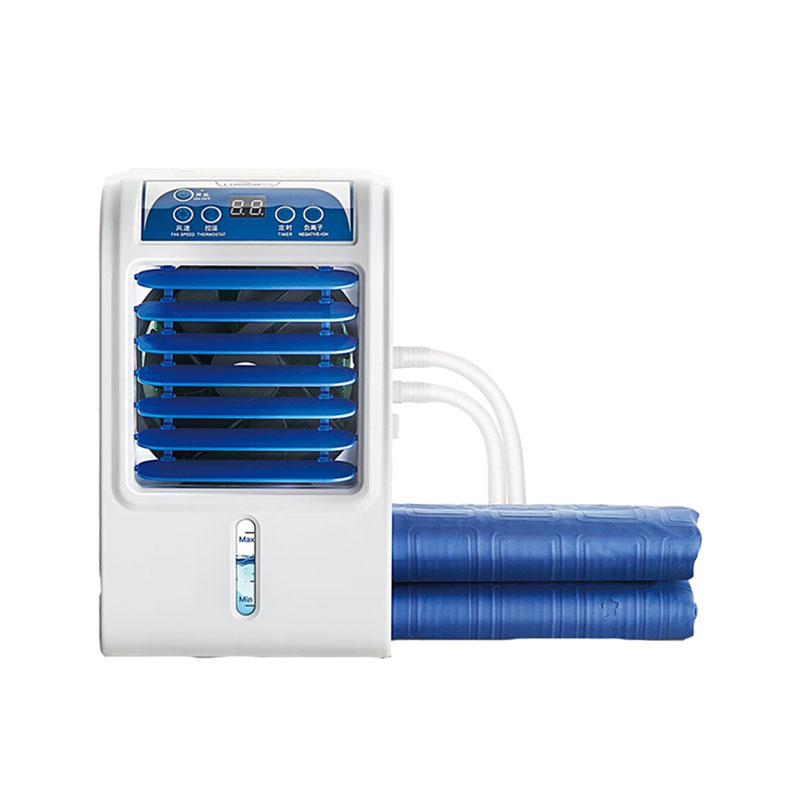Structural characteristics and material selection of water-cooled mattresses
Water-cooled mattresses are generally composed of surface fabrics, water circulation pipelines, temperature control systems and bottom support materials. Most of its surface materials are polyester fibers, cotton blends or TPU composite materials, which not only need to have a certain degree of softness and breathability, but also moisture resistance and biological stability. In order to adapt to long-term water circulation, the inside of the mattress must use pipes that are not easy to breed bacteria and mildew-proof treatment, so as to extend the product life and improve the hygienic performance.
Implementation mechanism of antibacterial function
Some water-cooled mattress manufacturers add silver ions, bamboo charcoal fibers or antibacterial finishing agents to the surface fabric to inhibit the growth of bacteria in a humid environment. In addition, the materials used in the water pipe system, such as TPU or PE, are often treated with antibacterial agents to reduce the risk of reproduction of microorganisms such as algae and bacteria in the circulation system. Although these treatment methods cannot completely block bacterial growth, they can reduce the total amount of bacteria to a certain extent and reduce problems that may be caused by odor, skin irritation, etc.

Anti-mite performance and adaptability to sensitive people
Mites prefer high temperature and high humidity environments, so traditional mattresses are more likely to breed mites. Water-cooled mattresses, due to their water circulation system, reduce the temperature and humidity fluctuations on the bed surface to a certain extent, which helps to inhibit the activity of mites. Some products also add physical anti-mite weaves or chemical anti-mite agents to the fabric to further reduce the probability of mite breeding. For users with sensitive skin or dust mite allergies, this protection can reduce the triggers of allergic reactions.
Skin compatibility analysis of surface fabrics
Most water-cooled mattress surface materials use non-irritating fibers, which are tested by OEKO-TEX or similar safety standards to ensure that long-term contact with the skin without adding allergenic ingredients will not cause itching or redness. Some high-end products use natural fibers (such as bamboo fiber or organic cotton) on the surface, which are softer to the touch and more suitable for people with weak or easily irritated skin.
Precautions for sensitive people when using
Although some water-cooled mattresses have antibacterial and anti-mite treatments, it is still recommended for people with skin diseases, infants or asthmatic constitutions to confirm the fabric composition and process treatment methods before use, and cover with pure cotton sheets. In addition, the water channel should be checked regularly for signs of algae deposition or microbial growth, and the internal water source or cleaning system components should be replaced in time according to the instructions.
Comparative analysis of water-cooled mattresses and other mattresses in terms of antibacterial and allergy protection
The following is a comparative table of different types of mattresses in terms of antibacterial, anti-mite and friendliness to sensitive people:
| Type | Antibacterial Treatment | Mite Resistance | Suitable for Sensitive Groups | Common Surface Materials |
|---|---|---|---|---|
| Water-Cooled Mattress | Silver ions, TPU antibacterial layer | Moderate to High | Conditionally suitable | Polyester, TPU, Bamboo Fiber |
| Latex Mattress | Natural antibacterial properties of latex | High | High | Natural Latex, Knitted Fabric |
| Memory Foam Mattress | Some contain antibacterial agents or none | Moderate | Some users may experience discomfort | Polyurethane, Knitted Fabric |
| Spring Mattress | Usually without antibacterial treatment | Low | Prone to dust accumulation and allergic reactions |
The impact of water circulation system on microbial growth and treatment suggestions
Because water-cooled mattresses contain water circulation channels inside, algae or bacteria may grow if the water source is not changed regularly. It is recommended that users replace the purified water every two weeks and regularly flush the internal pipes with the antibacterial cleaning agent recommended by the manufacturer. In addition, long-term exposure to high temperature and high humidity should be avoided to reduce the risk of microbial growth.
Analysis of allergy and irritation cases in actual user feedback
According to feedback from some users, very few people experienced slight skin redness or itching when using water-cooled mattresses for the first time, which was mainly related to the fabric material used, inadequate cleaning or water source pollution. Under standard use conditions, most sensitive users did not report severe discomfort. It can be seen that the antibacterial and anti-allergic properties of water-cooled mattresses are relatively controllable in most scenarios.

 英语
英语 中文简体
中文简体









